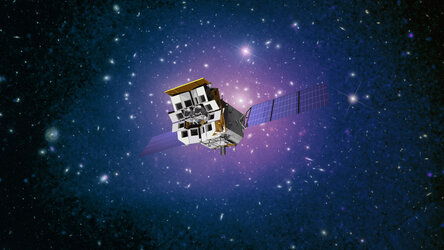Accept all cookies Accept only essential cookies See our Cookie Notice

About ESA
The European Space Agency (ESA) is Europe’s gateway to space. Its mission is to shape the development of Europe’s space capability and ensure that investment in space continues to deliver benefits to the citizens of Europe and the world.
Highlights
ESA - United space in Europe
This is ESA ESA facts Member States & Cooperating States Funding Director General Top management For Member State Delegations European vision European Space Policy ESA & EU Responsibility & Sustainability Annual Report Calendar of meetings Corporate newsEstablishments & sites
ESA Headquarters ESA ESTEC ESA ESOC ESA ESRIN ESA EAC ESA ESAC Europe's Spaceport ESA ESEC ESA ECSAT Brussels Office Washington OfficeWorking with ESA
Business with ESA ESA Commercialisation Gateway Law at ESA Careers Cyber resilience at ESA IT at ESA Newsroom Partnerships Merchandising Licence Education Open Space Innovation Platform Integrity and Reporting Administrative Tribunal Health and SafetyMore about ESA
History ESA Historical Archives Exhibitions Publications Art & Culture ESA Merchandise Kids Diversity ESA Brand Centre ESA ChampionsLatest
Space in Member States
Find out more about space activities in our 23 Member States, and understand how ESA works together with their national agencies, institutions and organisations.
Science & Exploration
Exploring our Solar System and unlocking the secrets of the Universe
Go to topicAstronauts
Missions
Juice Euclid Webb Solar Orbiter BepiColombo Gaia ExoMars Cheops Exoplanet missions More missionsActivities
International Space Station Orion service module Gateway Concordia Caves & Pangaea BenefitsLatest
Space Safety
Protecting life and infrastructure on Earth and in orbit
Go to topicAsteroids
Asteroids and Planetary Defence Asteroid danger explained Flyeye telescope: asteroid detection Hera mission: asteroid deflection Near-Earth Object Coordination CentreSpace junk
About space debris Space debris by the numbers Space Environment Report In space refuelling, refurbishing and removingSafety from space
Clean Space ecodesign Zero Debris Technologies Space for Earth Supporting Sustainable DevelopmentLatest
Applications
Using space to benefit citizens and meet future challenges on Earth
Go to topicObserving the Earth
Observing the Earth Future EO Copernicus Meteorology Space for our climate Satellite missionsCommercialisation
ESA Commercialisation Gateway Open Space Innovation Platform Business Incubation ESA Space SolutionsLatest
Enabling & Support
Making space accessible and developing the technologies for the future
Go to topicBuilding missions
Space Engineering and Technology Test centre Laboratories Concurrent Design Facility Preparing for the future Shaping the Future Discovery and Preparation Advanced Concepts TeamSpace transportation
Space Transportation Ariane Vega Space Rider Future space transportation Boost! Europe's Spaceport Launches from Europe's Spaceport from 2012Latest

Galaxy cluster Abell 1689
Thank you for liking
You have already liked this page, you can only like it once!
This Hubble image, taken with its Advanced Camera for Surveys (ACS) shows the galaxy cluster Abell 1689, which contains a million million stars in all. Its gravity acts as a cosmic lens, bending and magnifying the light of the galaxies located far behind it. This natural phenomenon is called gravitational lensing. Their light bent by the gravity of the cluster, the faraway galaxies appear as arc-shaped objects around it. The increased magnification allows astronomers to study remote galaxies in greater detail.
But one galaxy is so far away, that it does not show up in the optical image taken with the ACS (top, right). The light emitted by it is stretched to invisible infrared wavelengths due to the expansion of the universe.
Astronomers used Hubble's Near Infrared Camera and Multi-Object Spectrometer (NICMOS) and NASA's Spitzer Space Telescope with its Infrared Array Camera (IRAC) - with help from the gravitational lensing cluster - to see the faraway galaxy.
Dubbed A1689-zD1, the galaxy appears as a greyish-white smudge in the close-up view taken with Hubble's NICMOS (centre, right), and as a whitish blob in the Spitzer IRAC close-up view (bottom, right).
It is brimming with star birth. Hubble and Spitzer worked together to show that it is one of the youngest galaxies ever discovered. Astronomers estimate that the galaxy is 13 thousand million light-years away. Abell 1689 is 2.2 thousand million light-years away.
A1689-zD1 was born during the middle of the ‘dark ages’, a period in the early universe when the first stars and galaxies were just coming to life. This period lasted from about 400 000 to roughly a thousand million years after the Big Bang. Astronomers think that A1689-zD1 was one of the galaxies that helped end the dark ages.
The ACS images were taken in 2002, the NICMOS images in 2005 and 2007, and the Spitzer IRAC images in 2006.
-
CREDIT
NASA/ ESA/ JHU (L. Bradley, H. Ford)/ UCSC (R. Bouwens, G. Illingworth) -
LICENCE
ESA Standard Licence

Galaxy A1689-zD1

Galaxy cluster Abell 1689

Galaxy cluster Abell 1689

Arc in visible light















 Germany
Germany
 Austria
Austria
 Belgium
Belgium
 Denmark
Denmark
 Spain
Spain
 Estonia
Estonia
 Finland
Finland
 France
France
 Greece
Greece
 Hungary
Hungary
 Ireland
Ireland
 Italy
Italy
 Luxembourg
Luxembourg
 Norway
Norway
 The Netherlands
The Netherlands
 Poland
Poland
 Portugal
Portugal
 Czechia
Czechia
 Romania
Romania
 United Kingdom
United Kingdom
 Slovenia
Slovenia
 Sweden
Sweden
 Switzerland
Switzerland
























